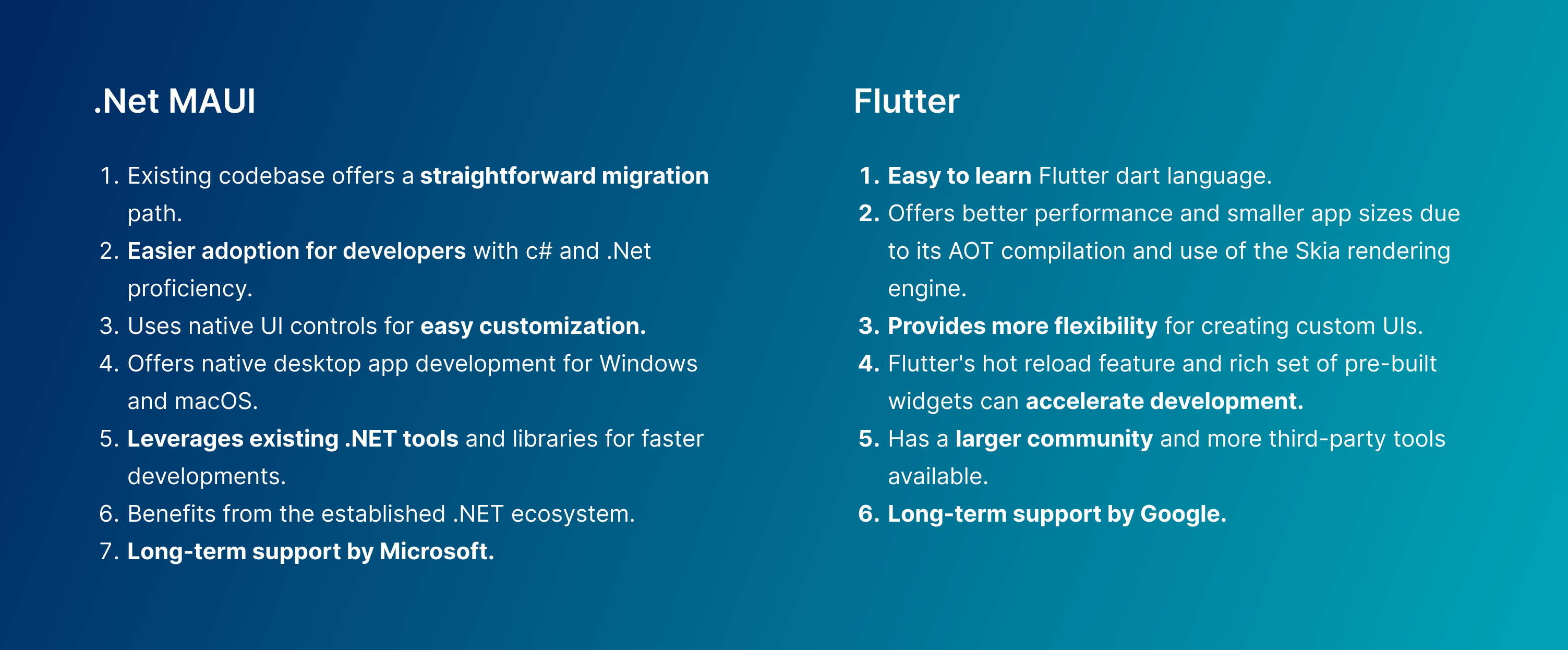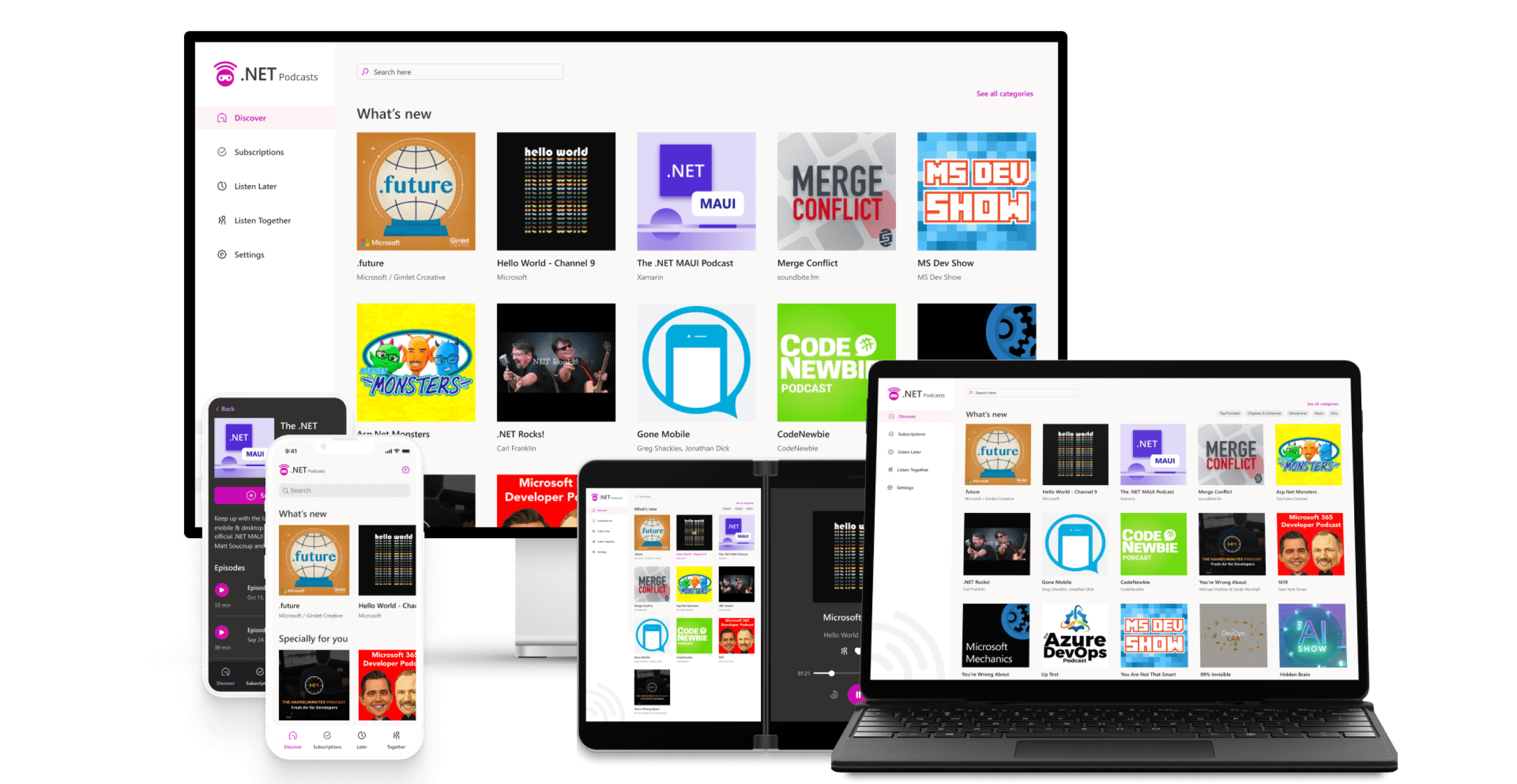As of May 1, 2024, Microsoft has officially ended support for Xamarin, leaving many businesses wondering about the best way forward for their mobile applications. This article aims to provide a comprehensive guide to help you understand the implications of this change and explore various upgrade options to ensure your apps remain functional, secure, and competitive.
Impacts of Xamarin’s End of Support
With the end of support for Xamarin, your apps might continue to function temporarily, but the lack of updates will quickly lead to significant issues:
- Security Vulnerabilities: Without regular updates, your apps will become increasingly vulnerable to security threats.
- Compliance Risks: Regulatory requirements such as KYC and FINTRAC may become harder to meet without ongoing support.
- App Store Mandates: Both Apple and Google will require apps to use their latest SDKs, unsupported by older Xamarin versions, leading to potential delisting.
Exploring Upgrade Options for Xamarin Developers
1. Migrate to .NET MAUI
.NET MAUI is the evolution of Xamarin.Forms, offering a unified framework for building cross-platform mobile and desktop applications. It leverages C# and XAML, making it a straightforward upgrade path for existing Xamarin.Forms apps.
Pros: Seamless integration with Microsoft ecosystem, future support from Microsoft, native performance.
Cons: Learning curve for new features, potential initial migration effort.
2. Transition to .NET for iOS and .NET for Android
For Xamarin Native apps, migrating to .NET for iOS and .NET for Android is a natural choice. These frameworks are now integrated directly into .NET, providing a smooth transition.
- Pros: Familiarity for developers already using Xamarin.Native, continued use of C#.
- Cons: Limited to mobile platforms, no direct support for desktop applications.
3. Adopt Web-Based Mobile Technologies
Frameworks like Flutter and React Native offer robust alternatives for building cross-platform mobile applications. Flutter, in particular, is gaining popularity for its high performance and flexible UI capabilities.
- Pros: Rich UI customization, cross-platform support including web, large community and third-party libraries.
- Cons: Requires learning new languages (Dart for Flutter), potential performance considerations.
4. Rewrite the App
In some cases, a complete rewrite using a different technology stack may be the best long-term solution, especially if the app is highly complex or requires significant new features.
- Pros: Opportunity to modernize the app, optimize for performance, and leverage the latest technologies.
- Cons: High initial investment, longer development time.
5. Graceful Shutdown
If your app has reached the end of its lifecycle, planning a graceful shutdown before the support deadline is a viable option.
- Pros: Simplifies the transition, reduces ongoing maintenance costs.
- Cons: Loss of user base, potential business impact.
It’s crucial to start the migration process early, as upgrades typically take 6 to 12 weeks. Failing to upgrade could result in app store delisting and security vulnerabilities. The choice of upgrade path depends on factors such as app complexity, team capabilities, and specific business requirements.
Consideration to keep, while deciding the next steps:
When considering the way forward for outdated Xamarin apps, businesses should evaluate several factors before deciding between .NET MAUI and Flutter:

Ultimately, the choice between .NET MAUI and Flutter will depend on your specific business needs, existing infrastructure, and development team preferences.
Conclusion
As you navigate the transition away from Xamarin, it’s crucial to choose the best path forward for your app and business needs. To assist you in making an informed decision, we’ve created a quick quiz that will help us understand your specific situation and provide personalized recommendations.
By filling out this brief questionnaire, you’ll receive tailored guidance on the most suitable upgrade options, whether it’s migrating to .NET MAUI, transitioning to .NET for iOS and Android, adopting web-based technologies like Flutter, React Native, or Ionic, considering a complete app rewrite, or planning a graceful shutdown.
Don’t miss this opportunity to ensure a seamless transition and continued success for your app. Click the link above and let us help you chart the best course forward!



